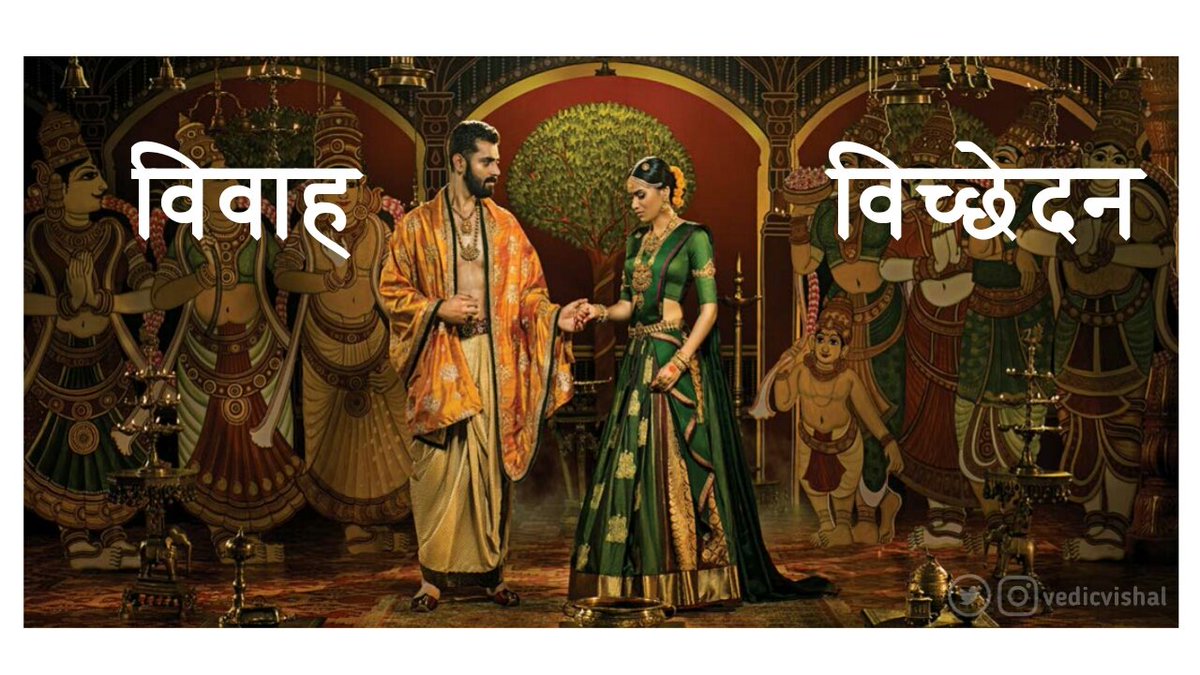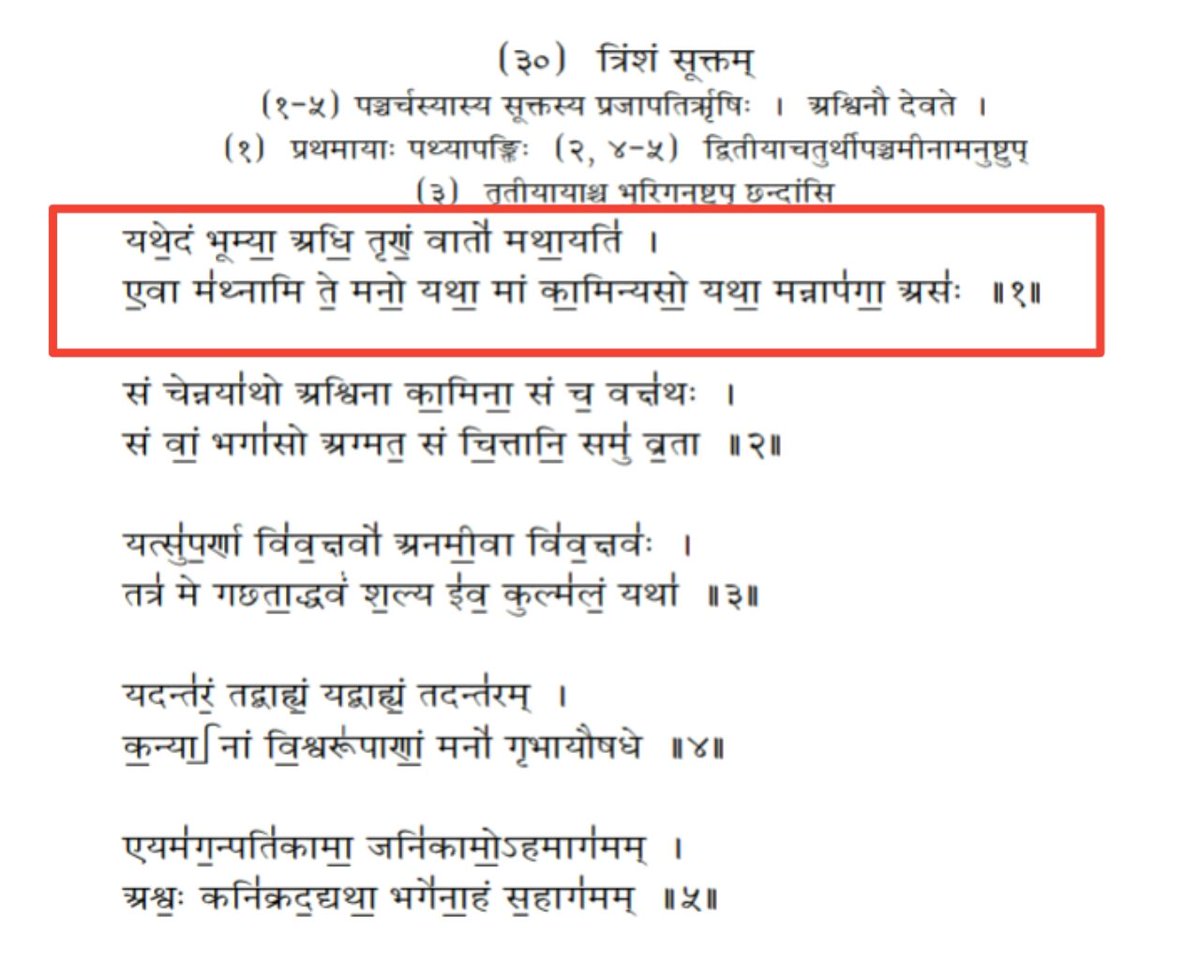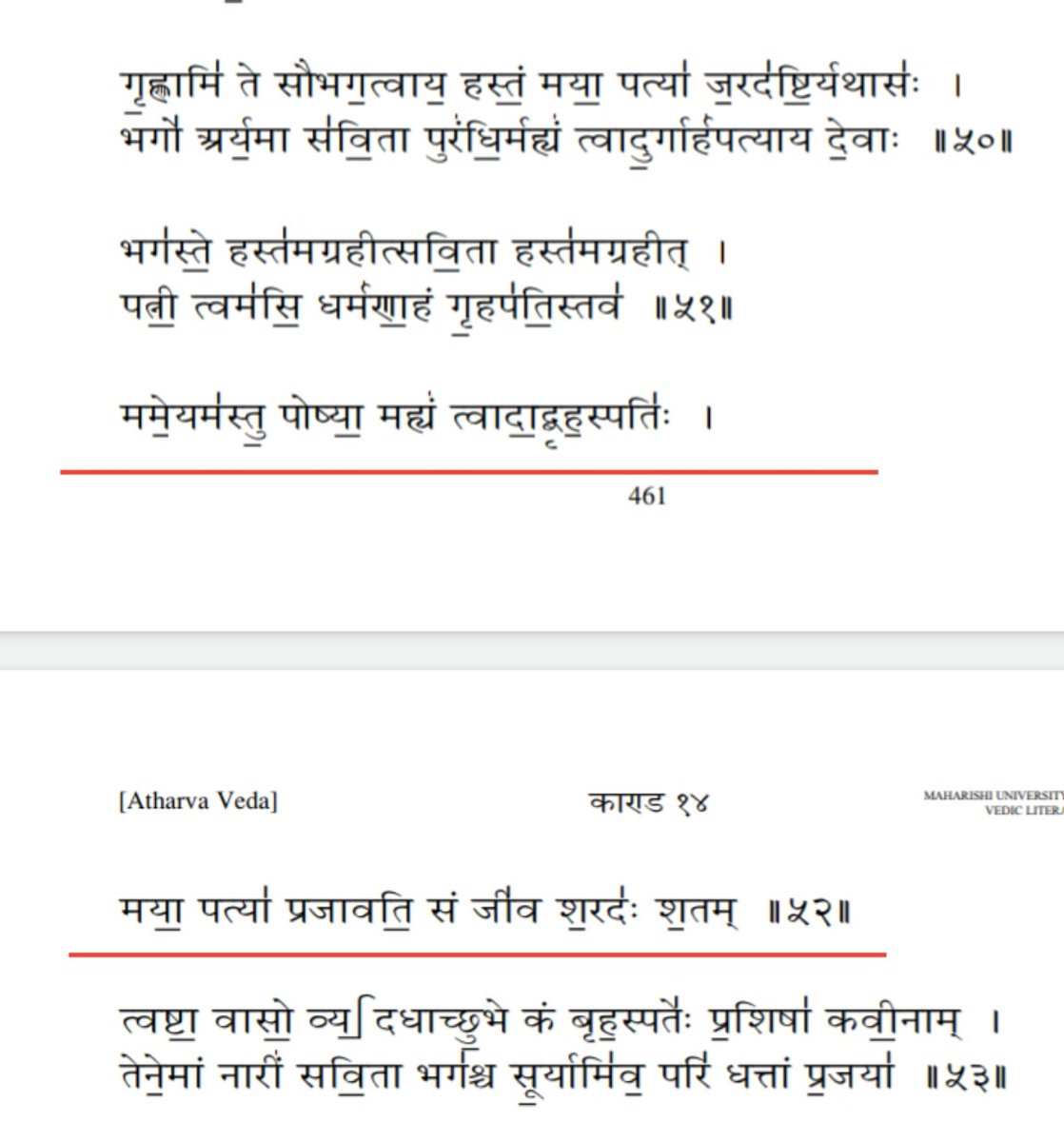Hinduism's view on divorce
Vedas and other Dharmic texts do not allow divorce. They strongly oppose it. Hindu marriage is a sacred, unbreakable and never-ending relationship. The relationship does not break even after death.
Vedas and other Dharmic texts do not allow divorce. They strongly oppose it. Hindu marriage is a sacred, unbreakable and never-ending relationship. The relationship does not break even after death.
In order to make marriage an unbreakable and stable relationship, fire is lit at the time of विवाह संस्कार. The bride and groom take a vow of devotion towards each other and society by witnessing the fire while orbiting it.
It is an old practice in the Hindu society that two persons or two parties who make a vow in front of Agni cannot be dissolved. Witnessing fire is often misinterpreted and is called अग्नि worship.
The real purpose of the presence of Agni is to show that the vows are taken with the help of Agni. Agni makes the impact of various substances. New material is contained in the new impact and cannot be easily converted back to their original elements,
because Agni has held them in firm bonds. The विवाद संस्कार performed before the अग्नि is a sign of अकाट्यता (Invulnerability) and prohibition of divorce.
This will be clear from some mantras of the Atharvaveda.
In (7-37-1) of the Atharvaveda, the wife says to the husband - "I bind you with this thoughtfully worn vastra. I associate you with me in such a way that you are only mine. And Do not pronounce the names of others."
In (7-37-1) of the Atharvaveda, the wife says to the husband - "I bind you with this thoughtfully worn vastra. I associate you with me in such a way that you are only mine. And Do not pronounce the names of others."
In Atharvaveda (2-30-1), the husband says to the wife - "O wife, you are the one who loves me, never separate from me."
(मा कामिन्यसो मन्नापगा अस:)
(मा कामिन्यसो मन्नापगा अस:)
Similarly, in the 14th Kaand of the Atharvaveda, at the time of marriage, the new bride and groom have been taught that - "Both of you husband and wife should remain stable in the पवित्र बंधन of married all your life and do not leave each other."
In the Atharvaveda, it is said in the fourteenth Kaand that - "These newly married spouses should live together with each other for the entire life in the same way that Chakwa and Chakvi are always together." (चक्रवाकेव दम्पति... विश्वमायुर्व्यश्नूताम् ।)
In Atharvaveda (14-1-52) state that —
"O bride! that you, whom the protector of the universe gave to me. Remain supported and nourised by me, O ye pro- creating lady may you live hundred autumns delightfully with me as your husband." (मया पत्या प्रजावति सं जीव शरद: शतम्।)
"O bride! that you, whom the protector of the universe gave to me. Remain supported and nourised by me, O ye pro- creating lady may you live hundred autumns delightfully with me as your husband." (मया पत्या प्रजावति सं जीव शरद: शतम्।)
The 85th Sukta of the 10th mandal of the Rigveda state that —
इहैव स्तं मा वियौष्टं विश्वमायुर्व्यश्नुतम् ।
क्रीळन्तौ पुत्रैर्नप्तृभिर्मोदमानौ स्वे गृहे ॥
Rigveda (10-84-42)
Actually this mantra talks about an ideal married life, or गृहस्थ आश्रम.
इहैव स्तं मा वियौष्टं विश्वमायुर्व्यश्नुतम् ।
क्रीळन्तौ पुत्रैर्नप्तृभिर्मोदमानौ स्वे गृहे ॥
Rigveda (10-84-42)
Actually this mantra talks about an ideal married life, or गृहस्थ आश्रम.
It says - O Husband and Wife! Remain here only - do not separate. Attain your full ages. While playing with your children and grandchildren, be happy in your own home.
Thus, the mantra pictures an ideal married life as follows -
1.) The marriage should be between a husband and a wife. The mantra uses Dual Number signifying this. Thus, the Vedas do not propound many husbands or many wives.
1.) The marriage should be between a husband and a wife. The mantra uses Dual Number signifying this. Thus, the Vedas do not propound many husbands or many wives.
2.) The husband and wife should live together. Divorce is not a happy situation, nor is living separately.
Means that - Marriage is a divine Relationship, so it is clearly stated in many places in the Vedas that the ideal situation is that the husband and wife should always be together and the relationship between them should never be divorced.
|| ॐ नमः शिवाय ||
|| ॐ नमः शिवाय ||

 Read on Twitter
Read on Twitter





